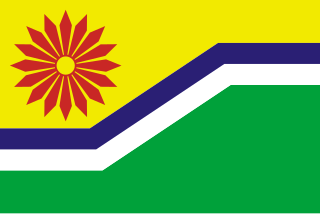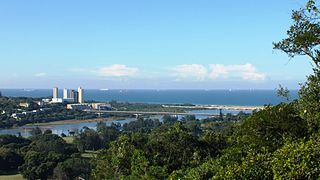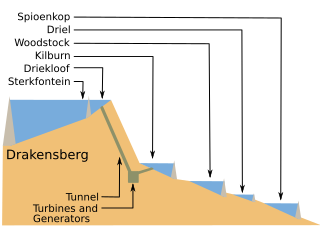| Tweedraai Dam | |
|---|---|
| Official name | Tweedraai Dam |
| Location | Mpumalanga, South Africa |
| Coordinates | 26°25′45″S29°13′0″E / 26.42917°S 29.21667°E Coordinates: 26°25′45″S29°13′0″E / 26.42917°S 29.21667°E |
| Opening date | 1991 |
| Operator(s) | Department of Water Affairs and Forestry |
| Dam and spillways | |
| Type of dam | earth-fill |
| Impounds | Trichardtspruit |
| Height | 20 metres (66 ft) |
| Length | 1,100 metres (3,600 ft) |
| Reservoir | |
| Creates | Tweedraai Dam Reservoir |
| Total capacity | 18×106 m3 (640×106 cu ft) |
| Catchment area | 61 km2 (24 sq mi) |
| Surface area | 237 hectares (590 acres) |
Tweedraai Dam is an earth-fill type dam located on the Trichardtspruit near Trichardt, Mpumalanga, South Africa. It was established in 1991 and serves primarily for flood control purposes. The hazard potential of the dam has been ranked high (3).

Trichardt is a town in Gert Sibande District Municipality in the Mpumalanga province of South Africa. The village 34km west of Bethal and 32km west-south-west of Leandra, next door to Secunda.

Mpumalanga is a province of South Africa. The name means "east", or literally "the place where the sun rises" in the Swazi, Xhosa, Ndebele and Zulu languages. Mpumalanga lies in eastern South Africa, bordering Swaziland and Mozambique. It constitutes 6.5% of South Africa's land area. It shares borders with the South African provinces of Limpopo to the north, Gauteng to the west, the Free State to the southwest, and KwaZulu-Natal to the south. The capital is Mbombela (Nelspruit).

South Africa, officially the Republic of South Africa (RSA), is the southernmost country in Africa. It is bounded to the south by 2,798 kilometres (1,739 mi) of coastline of Southern Africa stretching along the South Atlantic and Indian Oceans; to the north by the neighbouring countries of Namibia, Botswana, and Zimbabwe; and to the east and northeast by Mozambique and Eswatini (Swaziland); and it surrounds the enclaved country of Lesotho. South Africa is the largest country in Southern Africa and the 25th-largest country in the world by land area and, with over 57 million people, is the world's 24th-most populous nation. It is the southernmost country on the mainland of the Old World or the Eastern Hemisphere. About 80 percent of South Africans are of Sub-Saharan African ancestry, divided among a variety of ethnic groups speaking different African languages, nine of which have official status. The remaining population consists of Africa's largest communities of European (White), Asian (Indian), and multiracial (Coloured) ancestry.










